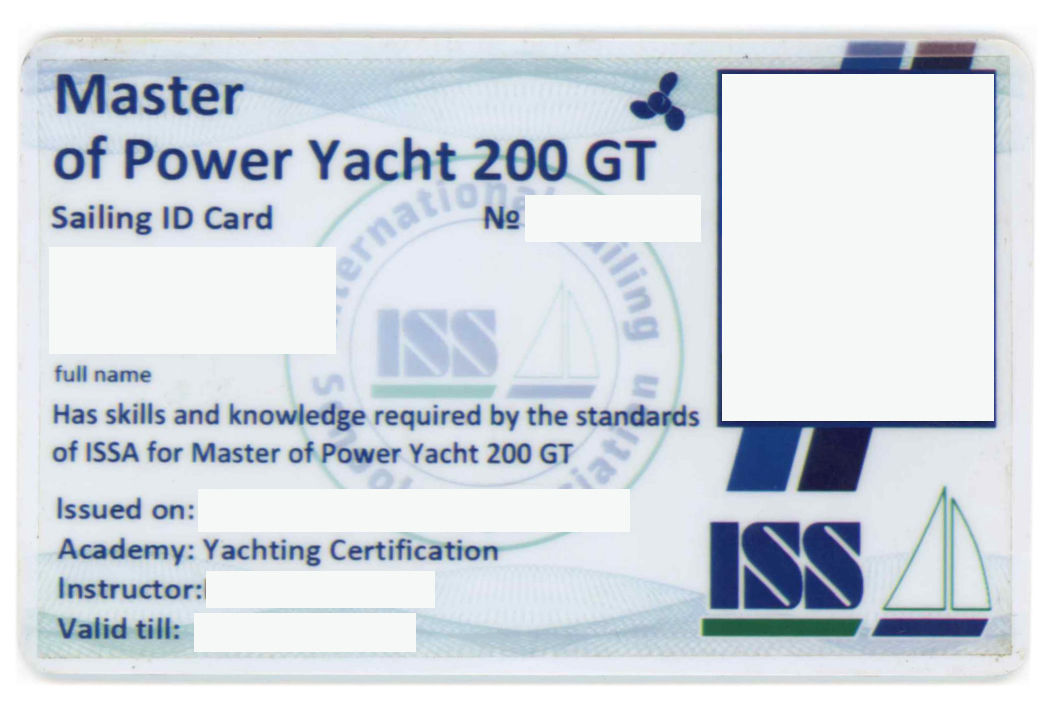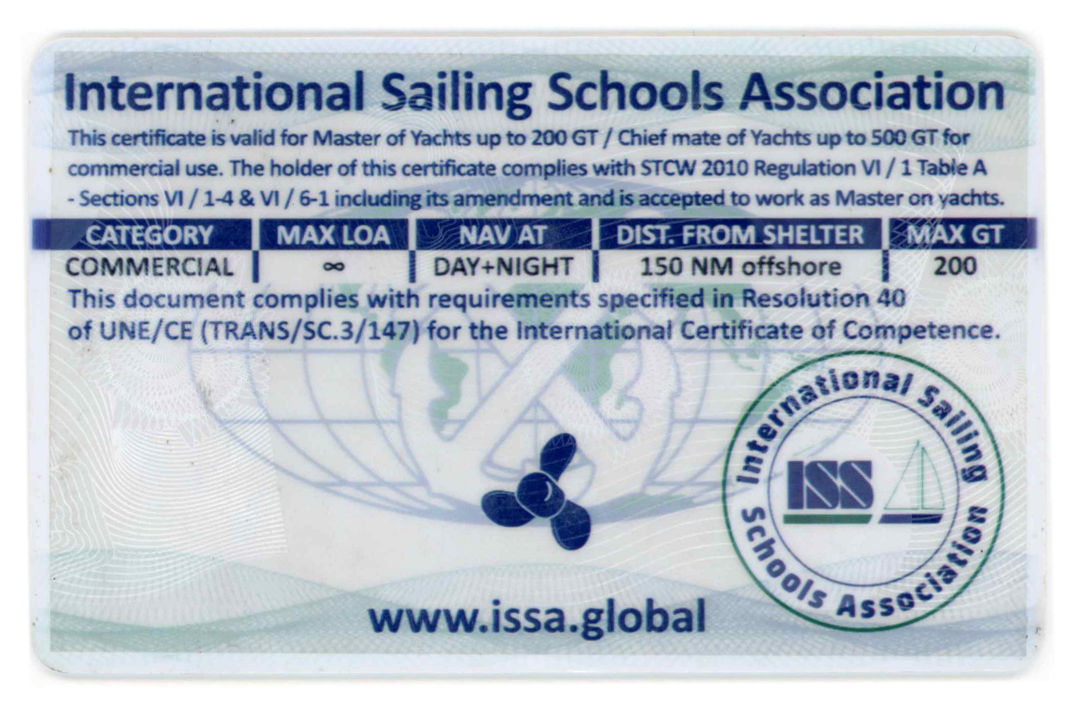



• Experience required prior training:
1440 hours at sea as a skipper or watch leader in at least 5 voyages, at least in 3 different sea areas, including tidal waters (at least one area), 2 passages over 150 nautical miles as skipper
At least 150 hours as an officer or watch leader on a yacht of minimum weight of 100 gross tonnes.
• Certification required prior training: LRC, STCW95 (or equivalent)
• Minimum age required: 25 years old
• Suggested number of training hours: 40 hours – training covers more exam
preparation
• Training: ISSA Instructor who holds MOY 200GT certificate
• Examinator: ISSA Examiner who holds MOY 200GT certificate
• Examination: 24 hours, including 6 at darkness Maximum 3 candidates at a time
• How to submit the application: Through an accredited school to ISSA training
centre only
Candidate for Master of Yacht 200GT should possess the same knowledge as Master of Yacht but should must have prior experience on yachts of at least 100 tonnes
documented in a log book or letter from captain or yacht owner signed and stamped.
Apart of that, Master of Yacht should:
• have proper appearance (dressing and hygiene)
• should behave properly (show respect to others)
• be confident in his actions;
• be friendly to his crew;
• remain calm in all situations and should not escalate stressful situations;
• have good communication skills with the crew;
• posses basic communicative knowledge of English language;
The 200 GT Course is an advanced training program for those who want to specialize in the field of recreational boating and the management of large vessels. This type of course prepares participants from both a theoretical and practical point of view, with a focus on regulations, safety management, navigation and maintenance of vessels.
Theoretical part:
1. Internal regulations: Study of regulations relating to safety, crew management and navigation rules.
2. Safety rigger: Knowledge of mandatory safety equipment on board, such as life jackets, life rafts and signalling systems.
3. Boat management: Organization and management of human and material resources on board to ensure safe and efficient operation.
4. General navigation: Basic principles of navigation, including the use of nautical charts, compasses and GPS.
5. Boat maintenance:
Oil change and service: How to perform an oil change on the boat's engines and a general check to maintain the efficiency of the vehicle.
Seacock check: Check the external water inlet systems, ensuring there are no obstructions or leaks.
Boat headphones: Maintenance and check of the headphones (bellows), essential for the correct functioning of the engine system.
6. Knowledge of the electrical system: Understanding the electrical system on board, including the management of batteries, inverters and electrical loads, to prevent failures.
Practical part:
1. Mooring and anchoring:
Mooring in port: Maneuvers for safe mooring, management of ropes and mooring equipment.
Anchoring in the roadstead: Anchoring techniques in open water, with evaluation of the seabed and the position of the anchor.
Bilotages: Assisted guidance of the boat during delicate phases such as mooring.
2. Day and night navigation: Exercises for navigating in different visibility conditions, using headlights, navigation lights and radar.
3. Man overboard recovery: Emergency procedures for recovering a person who has fallen overboard.
4. Routes and bearings: How to plot safe routes and take bearings using compasses, nautical charts and electronic systems.
5. Vessel position: Determining the exact position of the vessel while sailing.
6. Engine management: Management of engines in different operating conditions, including power changes and consumption management.
7. Complete pre-departure hull check: Preliminary checks to verify the integrity of the hull and vital components of the vessel before going out to sea.
8. Cargo management: Monitoring and management of cargo spaces and on-board equipment.
9. Radar navigation: Use of radar for safe navigation, especially in low visibility conditions or at night.
The course will cover approximately 240 nautical miles, allowing students to gain practical experience and confidence in using on-board instruments and managing the vessel in the open sea.